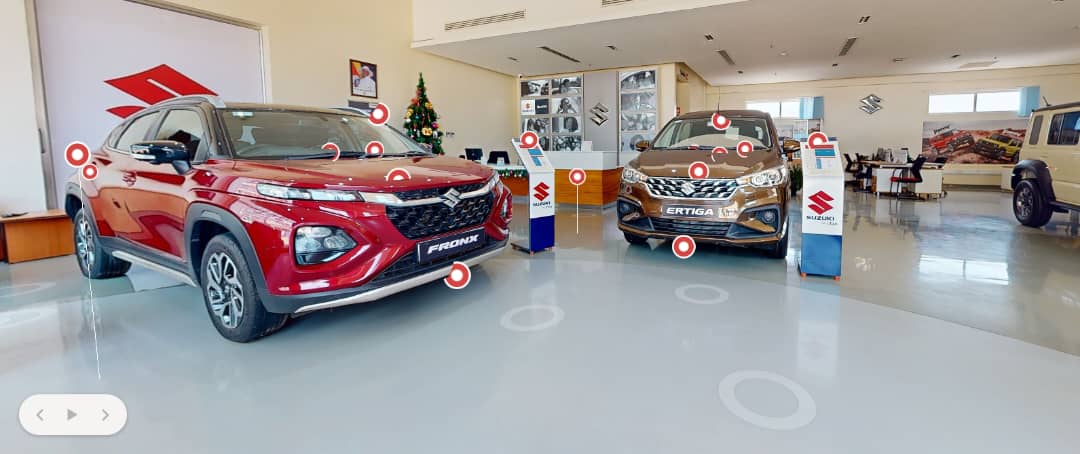Car Buying Made Easy
Virtual showrooms are not merely an extension of traditional car dealerships; they represent a paradigm shift in how consumers interact with automobiles. The adoption of digital experiences across industries—ranging from real estate to retail—has set the stage for the automotive sector to follow suit. Platforms like the Suzuki Virtual Showroom and Toyota Virtual Showroom by CFAO Mobility allow potential buyers to explore vehicles in a highly interactive environment, complete with 360-degree views, detailed specifications, and seamless purchasing options.

Virtual showrooms extend beyond mere convenience. They cater to a generation of digital-first consumers who prefer to research and make purchasing decisions online. Additionally, as remote working and online shopping become more ingrained in daily life, the expectation for a digital car-buying experience has grown significantly.
Traditionally, purchasing a vehicle required multiple visits to dealerships, hours spent comparing models, and extensive negotiations. However, with the introduction of Virtual Showrooms, the process has become seamless and efficient. Whether it’s the robust Toyota Land Cruiser 300, the versatile Suzuki Grand Vitara Hybrid, or the stylish Toyota Starlet, customers can now inspect vehicle features, compare options, and even request a quote online.

The Merits of Virtual Showrooms
Unparalleled Accessibility: Virtual showrooms remove geographical barriers, enabling potential buyers to explore vehicles from anywhere in the world. This is particularly beneficial for international buyers, fleet managers looking to discover latest solutions, and individuals with tight schedules.
Enhanced Customer Experience: Unlike static images or generic car listings, platforms like the Toyota by CFAO Virtual Showroom provide an engaging and interactive experience. Customers can zoom in on details, compare models side by side, and access real-time updates on pricing and availability.
Cost and Time Efficiency: By minimizing the need for physical visits, virtual showrooms streamline the decision-making process. Prospective buyers can efficiently research and shortlist vehicles before heading to a dealership for a final test drive or purchase.
Sustainability and Innovation: Digital showrooms align with global sustainability trends by reducing the carbon footprint associated with multiple dealership visits. Furthermore, they encourage manufacturers and dealers to adopt cutting-edge technologies such as augmented reality (AR) and artificial intelligence (AI) to enhance the buying experience.

A Glimpse into the Future
The virtual showrooms are exciting innovations in automotive. Emerging technologies such as AR and virtual reality (VR) will make these platforms even more immersive, allowing customers to “sit” inside a vehicle, test different configurations, and experience real-time driving simulations. AI-driven customization will also enable buyers to receive personalized recommendations based on their preferences and driving habits.
As the automotive industry continues to evolve, platforms like the Suzuki Virtual Showroom and Toyota Virtual Showroom by CFAO Mobility will play a crucial role in shaping the car-buying journey. Their growing adoption worldwide signals a shift toward a more flexible, customer-centric, and technologically advanced marketplace.
The question is no longer whether virtual showrooms will become mainstream—it’s how quickly businesses and consumers will embrace them as the new normal for automotive retail. The road ahead is digital, and the future of car buying has never looked more promising.
Visit https://www.suzuki.ug/en/virtual-showroom and https://www.toyota.co.ug/en/virtual-showroom for a real experience.

The Author, Mr. Isaac Tegule, is the Head of Marketing at CFAO Mobility Uganda, an authorized distributor of brand-new Toyota vehicles, Suzuki vehicles, and Yamaha motorcycles.





